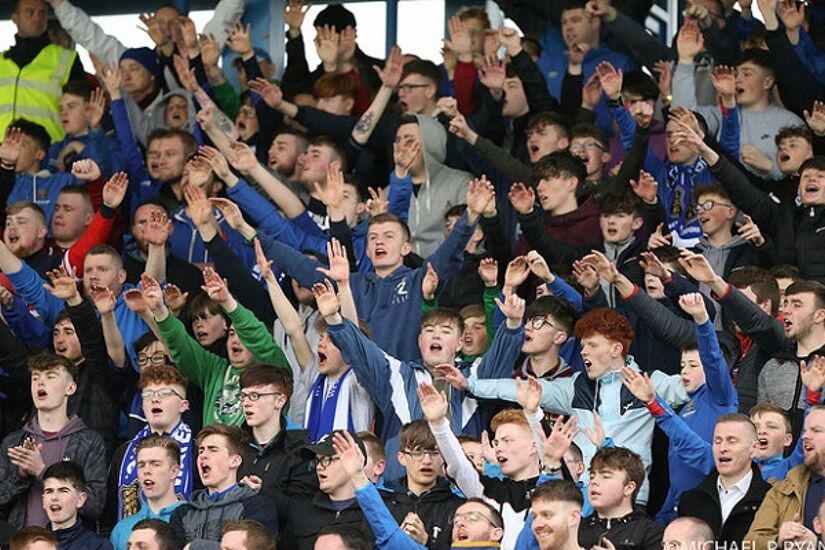Could the League of Ireland take inspiration from Canada's marketing campaign?

Credit: Michael P Ryan (ETPhotos)
No matter how good you think your product is, you need to market it continually to maintain awareness of it. Even Coca-Cola has to spend millions a year on advertising. And the League of Ireland is a product too, one with a lot of competition. The challenges clubs face on a weekly basis getting people through the turnstiles are well documented.
People have lots of options if they are looking for a diversion on a Friday night (or Saturday afternoon as the case may be). The GAA and IRFU know they need to work to keep the punters coming through the stiles. And they are very active at it. It's even harder for the League of Ireland, who also face competition for the attention of football fans from the English Premiership.
But marketing campaigns are expensive, and most clubs in Ireland don't have the budgets to mount effective campaigns of their own. But could the FAI coordinate a league-wide campaign? And if so what would it look like? We could look across the North Atlantic for a potentially intriguing case study.
Next year will see the launch of a professional football league in Canada, and before a single player has been signed to any of the founding teams, the league is setting off on a massive marketing blitz to lay the foundations for its launch.
The unveiling of a professional league in any sport is a massive undertaking and not one that happens often. That makes what is happening in Canada very exciting. Next year, the Canadian Professional League (CPL) will debut. Twelve completely new clubs will compete with the league being built entirely from scratch.
The stakes are high and the risks are considerable. There is little room for error. With the US based Major League Soccer already well established in 3 key markets in Canada – Toronto, Montreal and Vancouver – first impressions could make or break the nascent Canadian league.
The CPL is undertaking a promotional effort to ensure that the launch is a success with the fabled advertising agency J. Walter Thompson coming onboard to run the marketing campaign.
The theme of the marketing strategy is about building the league from the bottom up, directly connecting fans, clubs and players. Inspirational stories about coaches and players will be shared, to inspire young talent to see the league as their way to the professional game.
The CPL's VP of Marketing Roy Nasrallah, is a 15-year veteran of Nike's Middle East division. He told the Canadian publication Strategy "We want to be a platform for the fans. A platform that connects the fans directly to the game."
Even the league's logo is a key element of the marketing strategy. Almost a year before the start of the league, and with only 2 teams confirmed at the time, the logo was announced to much fanfare.
According to the CPL's website "The … League emblem tells the story of the Canadian soccer journey from club to community to country. Inspired by the North Star, the central icon acts as a guiding light for soccer in Canada. The star is surrounded by additional elements that make up Canada… the land, coasts, sky and a maple leaf." It is clearly designed to reinforce the league's Canadian identity.
Unlike the CPL, the League of Ireland has been around since 1921. But there is an argument to be made for a "relaunch" or at the very least a re-branding of the league. At present approximately 95% of football fans in Ireland have no affinity to an Irish club. If only a tiny portion of that number, say 5%, could be reached successfully, it would result in a doubling of attendances at games. That would be a game changer for the game in the country.
So, what would a marketing campaign for the League of Ireland look like? One thing the CPL example shows is the importance of telling stories as a way to build a brand identity.
The narrative of the league is that the clubs represent the localities that their own fans live in, they nurture aspiring young professional players, many of whom have gone on to represent their country in recent times. And the clubs fly the flag for the country in European club competitions.
As products of the Irish system they are truly representative of football in the country, and if given the chance, these clubs and players have inspiring stories to tell us.
Whatever form any marketing strategy might take, it would be a mistake to try to change people's minds about the League of Ireland. Once a mind is made up on something it is very difficult to change it. There are areas where the league needs a lot of work. That would be a separate initiative entirely.
So, the league should be sold just as it is, focusing clearly on its identity and the stories of its players, and what makes it different from its competitors as in the CPL example.
Rather than trying to compete with the Premiership, the league should carve out its own niche. Unlike broadcasts of English Premiership games, the league offers the chance to "be there" with the connection to other fans and the team that this brings. That is the league's unique selling point.
A joint effort by all the clubs in the country, alongside the FAI would be more effective than anything the clubs could achieve on their own. And any marketing campaign would need to be ongoing to forge a lasting relationship between the league and the general public. If Coca-Cola needs to do it, then so surely does the League of Ireland.

